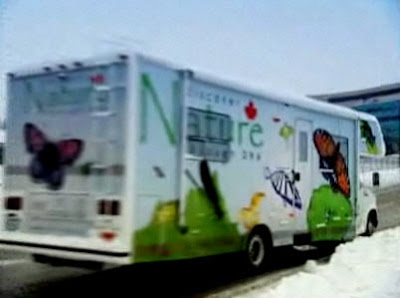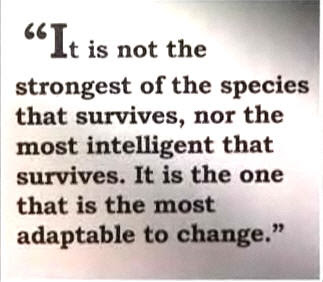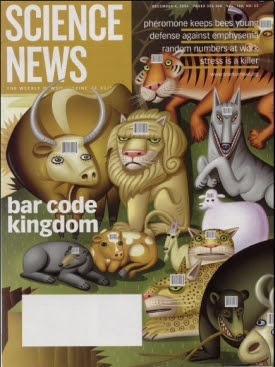Note the following from the introduction by my friends/colleagues Brian Golding, Bob Hanner, and Paul Hebert:
Here are the papers, all open access thanks to support from NSERC and Genome Canada (before the cuts):
Molecular Ecology Resources
Volume 9 Issue s1 May 2009
Special Issue on Barcoding Life
Preface (p iv-vi)
G. B. GOLDING, R. HANNER, P. D. N. HEBERT
Published Online: Apr 21 2009 10:59AM
DOI: 10.1111/j.1755-0998.2009.02654.x
Abstract | PDF
KEYNOTE ARTICLE
Integration of DNA barcoding into an ongoing inventory of complex tropical biodiversity (p 1-26)
DANIEL H. JANZEN, WINNIE HALLWACHS, PATRICK BLANDIN, JOHN M. BURNS, JEAN-MARIE CADIOU, ISIDRO CHACON, TANYA DAPKEY, ANDREW R. DEANS, MARC E. EPSTEIN, BERNARDO ESPINOZA, JOHN G. FRANCLEMONT, WILLIAM A. HABER, MEHRDAD HAJIBABAEI, JASON P. W. HALL, PAUL D. N. HEBERT, IAN D. GAULD, DONALD J. HARVEY, AXEL HAUSMANN, IAN J. KITCHING, DON LAFONTAINE, JEAN-FRANÇOIS LANDRY, CLAUDE LEMAIRE, JACQUELINE Y. MILLER, JAMES S. MILLER, LEE MILLER, SCOTT E MILLER, JOSE MONTERO, EUGENE MUNROE, SUZANNE RAB GREEN, SUJEEVAN RATNASINGHAM, JOHN E. RAWLINS, ROBERT K. ROBBINS, JOSEPHINE J. RODRIGUEZ, RODOLPHE ROUGERIE, MICHAEL J. SHARKEY, M. ALEX SMITH, M. ALMA SOLIS, J. BOLLING SULLIVAN, PAUL THIAUCOURT, DAVID B. WAHL, SUSAN J. WELLER, JAMES B. WHITFIELD, KEITH R. WILLMOTT, D. MONTY WOOD, NORMAN E. WOODLEY, JOHN J. WILSON
Published Online: Apr 21 2009 10:59AM
DOI: 10.1111/j.1755-0998.2009.02628.x
Abstract | PDF
BARCODING METHODOLOGY AND APPLICATIONS
The front-end logistics of DNA barcoding: challenges and prospects (p 27-34)
ALEX V. BORISENKO, JAYME E. SONES, PAUL D. N. HEBERT
Published Online: Apr 21 2009 10:59AM
DOI: 10.1111/j.1755-0998.2009.02629.x
Abstract | PDF
Express barcodes: racing from specimen to identification (p 35-41)
NATALIA V. IVANOVA, ALEX V. BORISENKO, PAUL D. N. HEBERT
Published Online: Apr 21 2009 10:59AM
DOI: 10.1111/j.1755-0998.2009.02630.x
Abstract | PDF
DNA barcoding and the mediocrity of morphology (p 42-50)
LAURENCE PACKER, JASON GIBBS, CORY SHEFFIELD, ROBERT HANNER
Published Online: Apr 21 2009 10:59AM
DOI: 10.1111/j.1755-0998.2009.02631.x
Abstract | PDF
Biological agent detection technologies (p 51-57)
JOHN P. JAKUPCIAK, RITA R. COLWELL
Published Online: Apr 21 2009 10:59AM
DOI: 10.1111/j.1755-0998.2009.02632.x
Abstract | PDF
Efficient algorithms for the discovery of DNA oligonucleotide barcodes from sequence databases (p 58-64)
M. ZAHARIEV, V. DAHL, W. CHEN, C. A. LÉVESQUE
Published Online: Apr 21 2009 10:59AM
DOI: 10.1111/j.1755-0998.2009.02651.x
Abstract | PDF
BARCODING MICRO- AND MESO-FAUNA
Barcoding diatoms: Is there a good marker? (p 65-74)
MÓNICA B. J. MONIZ, IRENA KACZMARSKA
Published Online: Apr 21 2009 10:59AM
DOI: 10.1111/j.1755-0998.2009.02633.x
Abstract | PDF
Development of primers for the mitochondrial cytochrome c oxidase I gene in digenetic trematodes (Platyhelminthes) illustrates the challenge of barcoding parasitic helminths (p 75-82)
ANNA MOSZCZYNSKA, SEAN A. LOCKE, J. DANIEL McLAUGHLIN, DAVID J. MARCOGLIESE, TERESA J. CREASE
Published Online: Apr 21 2009 10:59AM
DOI: 10.1111/j.1755-0998.2009.02634.x
Abstract | PDF
BARCODING FUNGI
Progress towards DNA barcoding of fungi (p 83-89)
KEITH A. SEIFERT
Published Online: Apr 21 2009 10:59AM
DOI: 10.1111/j.1755-0998.2009.02635.x
Abstract | PDF
Multiple copies of cytochrome oxidase 1 in species of the fungal genus Fusarium (p 90-98)
SCOTT R. GILMORE, TOM GRÄFENHAN, GERRY LOUIS-SEIZE, KEITH A. SEIFERT
Published Online: Apr 21 2009 10:59AM
DOI: 10.1111/j.1755-0998.2009.02636.x
Abstract | PDF
Evaluation of mitochondrial genes as DNA barcode for Basidiomycota (p 99-113)
AGATHE VIALLE, NICOLAS FEAU, MATHIEU ALLAIRE, MARYNA DIDUKH, FRANCIS MARTIN, JEAN-MARC MONCALVO, RICHARD C. HAMELIN
Published Online: Apr 21 2009 10:59AM
DOI: 10.1111/j.1755-0998.2009.02637.x
Abstract | PDF
A high density COX1 barcode oligonucleotide array for identification and detection of species of Penicillium subgenus Penicillium (p 114-129)
W. CHEN, K.A. SEIFERT, C.A. LÉVESQUE
Published Online: Apr 21 2009 10:59AM
DOI: 10.1111/j.1755-0998.2009.02638.x
Abstract | PDF
BARCODING PLANTS
Are plant species inherently harder to discriminate than animal species using DNA barcoding markers? (p 130-139)
ARON J. FAZEKAS, PRASAD R. KESANAKURTI, KEVIN S. BURGESS, DIANA M. PERCY, SEAN W. GRAHAM, SPENCER C. H. BARRETT, STEVEN G. NEWMASTER, MEHRDAD HAJIBABAEI, BRIAN C. HUSBAND
Published Online: Apr 21 2009 10:59AM
DOI: 10.1111/j.1755-0998.2009.02652.x
Abstract | PDF
Routine DNA barcoding of Canadian Gracilariales (Rhodophyta) reveals the invasive species Gracilaria vermiculophylla in British Columbia (p 140-150)
GARY W. SAUNDERS
Published Online: Apr 21 2009 10:59AM
DOI: 10.1111/j.1755-0998.2009.02639.x
Abstract | PDF
Plant DNA barcodes and species resolution in sedges (Carex, Cyperaceae) (p 151-163)
JULIAN R. STARR, ROBERT F. C. NACZI, BRIANNA N. CHOUINARD
Published Online: Apr 21 2009 10:59AM
DOI: 10.1111/j.1755-0998.2009.02640.x
Abstract | PDF
DNA barcoding discriminates a new cryptic grass species revealed in an ethnobotany study by the hill tribes of the Western Ghats in southern India (p 164-171)
SUBRAMANYAM RAGUPATHY, STEVEN G. NEWMASTER, MARUTHAKKUTTI MURUGESAN, VELUSAMY BALASUBRAMANIAM
Published Online: Apr 21 2009 10:59AM
DOI: 10.1111/j.1755-0998.2009.02641.x
Abstract | PDF
Testing plant barcoding in a sister species complex of pantropical Acacia (Mimosoideae, Fabaceae) (p 172-180)
STEVEN G. NEWMASTER, RAGUPATHY SUBRAMANYAM
Published Online: Apr 21 2009 10:59AM
DOI: 10.1111/j.1755-0998.2009.02642.x
Abstract | PDF
BARCODING ARTHROPODS
DNA barcoding of marine crustaceans from the Estuary and Gulf of St Lawrence: a regional-scale approach (p 181-187)
ADRIANA E. RADULOVICI, BERNARD SAINTE-MARIE, FRANCE DUFRESNE
Published Online: Apr 21 2009 10:59AM
DOI: 10.1111/j.1755-0998.2009.02643.x
Abstract | PDF
DNA barcodes to identify species and explore diversity in the Adelgidae (Insecta: Hemiptera: Aphidoidea) (p 188-195)
R. G. FOOTTIT, H. E. L. MAW, N. P. HAVILL, R. G. AHERN, M. E. MONTGOMERY
Published Online: Apr 21 2009 10:59AM
DOI: 10.1111/j.1755-0998.2009.02644.x
Abstract | PDF
DNA barcoding a regional bee (Hymenoptera: Apoidea) fauna and its potential for ecological studies (p 196-207)
CORY S. SHEFFIELD, PAUL D. N. HEBERT, PETER G. KEVAN, LAURENCE PACKER
Published Online: Apr 21 2009 10:59AM
DOI: 10.1111/j.1755-0998.2009.02645.x
Abstract | PDF
DNA barcode accumulation curves for understudied taxa and areas (p 208-216)
M. ALEX SMITH, JOSE FERNANDEZ-TRIANA, ROB ROUGHLEY, PAUL D. N. HEBERT
Published Online: Apr 21 2009 10:59AM
DOI: 10.1111/j.1755-0998.2009.02646.x
Abstract | PDF
Combining DNA barcoding and morphological analysis to identify specialist floral parasites (Lepidoptera: Coleophoridae: Momphinae: Mompha) (p 217-223)
VIRGINIA J. EMERY, JEAN-FRANÇOIS LANDRY, CHRISTOPHER G. ECKERT
Published Online: Apr 21 2009 10:59AM
DOI: 10.1111/j.1755-0998.2009.02647.x
Abstract | PDF
Identification of Nearctic black flies using DNA barcodes (Diptera: Simuliidae) (p 224-236)
JULIO RIVERA, DOUGLAS C CURRIE
Published Online: Apr 21 2009 10:59AM
DOI: 10.1111/j.1755-0998.2009.02648.x
Abstract | PDF
BARCODING VERTEBRATES
DNA barcoding reveals overlooked marine fishes (p 237-242)
TYLER S. ZEMLAK, ROBERT D. WARD, ALLAN D. CONNELL, BRONWYN H. HOLMES, PAUL D. N. HEBERT
Published Online: Apr 21 2009 10:59AM
DOI: 10.1111/j.1755-0998.2009.02649.x
Abstract | PDF
Identifying sharks with DNA barcodes: assessing the utility of a nucleotide diagnostic approach (p 243-256)
EUGENE H.-K. WONG, MAHMOOD S. SHIVJI, ROBERT H. HANNER
Published Online: Apr 21 2009 10:59AM
DOI: 10.1111/j.1755-0998.2009.02653.x
Abstract | PDF
Countering criticisms of single mitochondrial DNA gene barcoding in birds (p 257-268)
ALLAN J. BAKER, ERIKA SENDRA TAVARES, REBECCA F. ELBOURNE
Published Online: Apr 21 2009 10:59AM
DOI: 10.1111/j.1755-0998.2009.02650.x
Abstract | PDF







